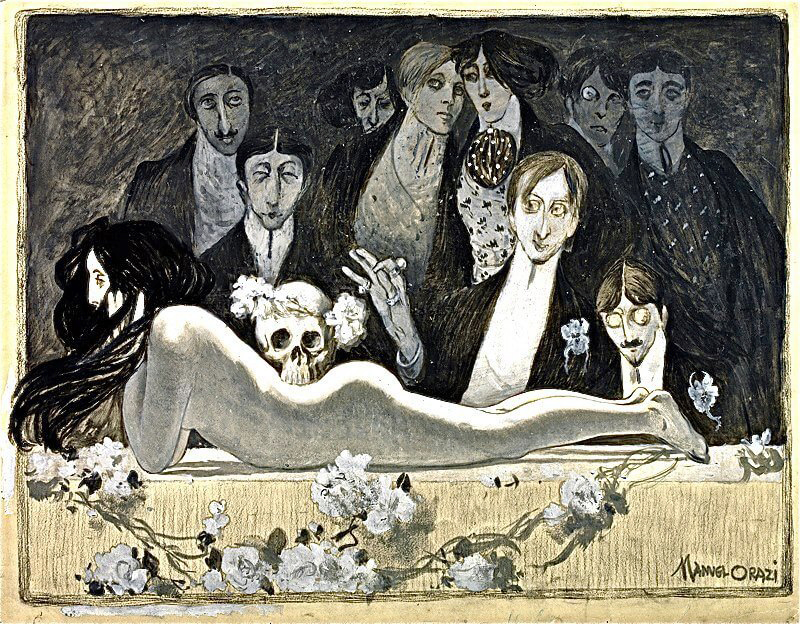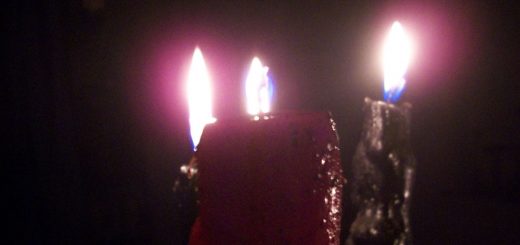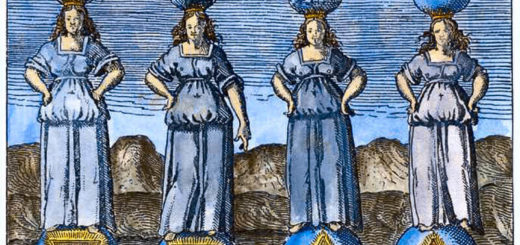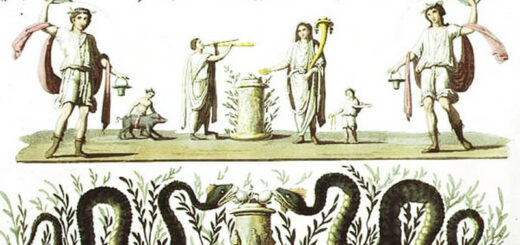Joris-Karl Huysmans’ Là-Bas – Riding with the Fin de Siècle Devil
The story of Là-Bas concerns the novelist Durtal who is disgusted by the emptiness and vulgarity of the modern world. He attempts to escape it by studying medieval topics and plans to write a biography about the 15th century murderer and devil-worshipper Gilles de Rais. Through his contacts in Paris with Dr. Johannes, (modelled after Joseph-Antoine Boullan, a French Roman Catholic priest accused of Satanism), Durtal discovers that Satanism is not a thing of the past, but alive and kicking in turn of the century France. He embarks on an investigation of the occult underworld with the help of his lover Madame Chantelouve. Là-Bas climaxes with a description of a black mass.

Joris-Karl Huysmans’ Là-Bas describes a black mass in the Fin de Siegle period.
Early life
Charles Marie Georges Huysmans (February 5, 1848 – May 12, 1907) was a French novelist who published his works as Joris-Karl Huysmans. Là-Bas (English: Down There or The Damned) was first published in 1891. Huysmans is now recognized as one of the most challenging and pioneering figures in European literature. Short after its publication, the sale of the book was banned on French railway stations.

Joris-Karl Huysmans
Joris-Karl Huysmans once remarked, “The tail-ends of the centuries all resemble each other. They are always periods of vacillation and unrest. Magic flourishes when materialism is rife.” (Là-Bas, 1891) Charles-Marie-Georges Huysmans, born on February 5, 1848, in Paris and passing away on May 12, 1907, in Paris, was a renowned French novelist who published under the name J.K. (Joris-Karl) Huysmans. His most celebrated work is the novel À rebours (1884), published in English as Against the Grain or Against Nature. Huysmans was born to a French mother and a Dutch father.
Godfried Huysmans worked as a lithographer, and Malvina Badin Huysmans as a schoolmistress. He faced early challenges, with his father’s death at age eight and his mother’s quick remarriage to Jules Og, a Protestant part-owner of a Parisian book-bindery. To emphasize his Dutch heritage, Huysmans used the name Joris-Karl Huysmans.
Despite his childhood struggles, including resentment toward his stepfather, Huysmans completed his education, earning a baccalauréat. He then embarked on a 32-year career in the French civil service until his income from book sales allowed him to support himself.
Working for the French Ministry of the Interior, Huysmans found the job monotonous. During the Franco-Prussian War, he was called to fight but was invalided out with dysentery, an experience he later incorporated into his story “Sac au dos” (Backpack), included in his collection Les Soirées de Médan.
Birth of a writer
After retiring from the Ministry in 1898, facilitated by the commercial success of his novel La cathédrale, Huysmans initially planned to move to Ligugé, establishing a community of Catholic artists, including Charles-Marie Dulac (1862-1898), whom he had praised in La cathédrale.
However, Dulac’s death led Huysmans to remain in Paris. Apart from his novels, Huysmans gained recognition for his art criticism in L’Art moderne (1883) and Certains (1889) and was a founding member of the Académie Goncourt.
An early supporter of Impressionism, he admired artists like Gustave Moreau, Odilon Redon, Edgar Degas, Claude Monet, and Camille Pissarro. Diagnosed with cancer of the mouth, lungs, and bones in 1905, likely due to years of chain smoking, Huysmans passed away in 1907 and was buried in the Cimetière de Montparnasse, Paris.
Whiz of the decadents and godfather of gay literature
“It is difficult to find a writer whose vocabulary is so extensive, so constantly surprising, so sharp and yet so exquisitely gamey in flavour, so constantly lucky in its chance finds and in its very inventiveness.” – Julien Gracq Huysmans became the most influential writer of the decadent movement.
His first publications were written in the naturalistic tradition of his days and drew the attention of Émile Zola. His early works portray the image of a grey, banal, and mundane existence, as in Ménage (1881) and À vau-l’eau (1882), in which he gives of his pessimism and disgust expressed for a modern, “ragtag and emptyheads” populated world.
When Huysmans turned his back on Naturalism, he rapidly became one of the icons of symbolism. In À rebours (1884), his first decadent novel, he describes a man who completely separates himself from the world and is only surrounded by beautiful things.
The book appalled his former admirer Zola, who felt it had dealt a “terrible blow” to Naturalism. À rebours (Against the Grain or Against Nature or Wrong Way) became both his most famous and infamous work.

Illustration of a 17th century black mass.
It featured the character of an aesthete, named des Esseintes, and decisively broke from Naturalism. It was seen as an example of “decadent” literature. The description of des Esseintes’ “alluring liaison” with a “cherry-lipped youth” was believed to have influenced other writers of the decadent movement, including Oscar Wilde, and the work is now considered an important step in the evolution of “gay literature.”
À rebours gained notoriety as an exhibit in the trials of Oscar Wilde in 1895. The prosecutor referred to it as a “sodomitical” book. After Huysmans drifted away from the Naturalists, he found new friends among the Symbolist and Catholic writers whose work he had praised in À rebours.
They included Jules Barbey d’Aurevilly, Villiers de L’Isle Adam, and Léon Bloy. Stéphane Mallarmé was so pleased with the publicity his verse had received from the novel that he dedicated one of his most famous poems, “Prose pour des Esseintes,” to its hero. Barbey d’Aurevilly told Huysmans that after writing À rebours, he would have to choose between “the muzzle of a pistol and the foot of the Cross.”
Huysmans, who had received a secular education and abandoned his Catholic religion in childhood, returned to the Catholic Church eight years later.
In “The Decadent Movement in Literature” (Harper’s Magazine, November 1893) Arthur Symons summarized Huysmans’ style as: “Barbaric in its profusion, violent in its emphasis, wearying in its splendor, it is – especially in regard to things seen extraordinarily expressive, with all the shades of a painter’s palette.
Elaborately and deliberately perverse, it is in its very perversity that Huysmans’ work – so fascinating, so repellent, so instinctively artificial – comes to represent, as the work of no other writer can be said to do, the main tendencies, the chief results, of the Decadent movement in literature.” Huysmans combined symbolism and aestheticism with decadence, and therefore his literature embodies the “completion” of the 19th century.
you may also like to read:
Japanese Witchcraft or Kodoku
The incubus or succubus – nightmare or astral sex date?
The real vampire in Russia and Slavonic countries






